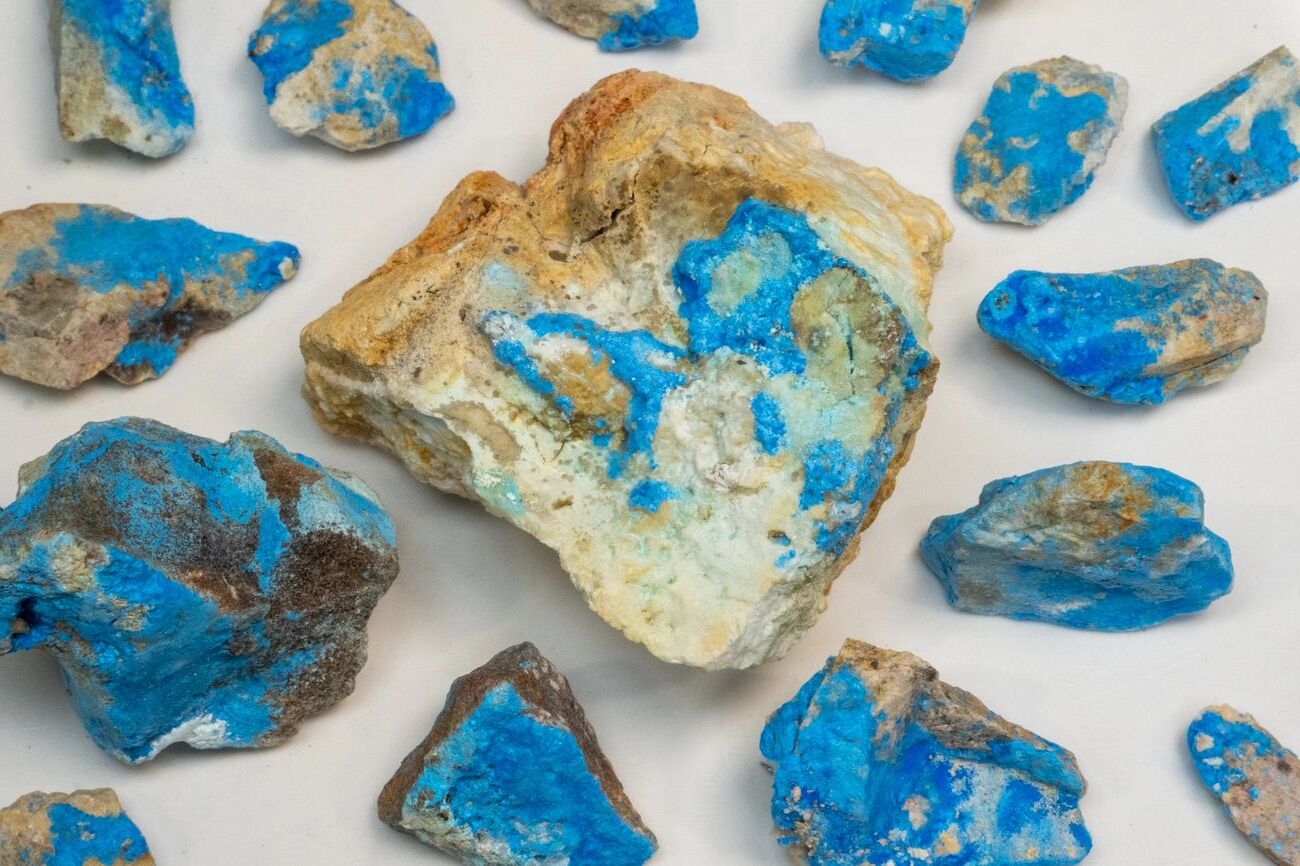
Cyanotrichite is a stunning blue mineral that often captures the attention of collectors and geologists alike. But what makes this mineral so special? Cyanotrichite is known for its vibrant azure color and delicate, hair-like crystals. Found in copper-rich environments, it forms through the oxidation of copper ores. This mineral isn't just a pretty face; it also tells a story of geological processes and mineral formation. Cyanotrichite can be found in various locations around the world, including the United States, China, and Russia. Its unique properties and striking appearance make it a favorite among mineral enthusiasts. Ready to learn more about this fascinating mineral? Let's dive into 30 intriguing facts about Cyanotrichite!
Key Takeaways:
- Cyanotrichite is a rare and beautiful blue mineral found in specific geological settings. It's delicate, used in education, and valuable to collectors due to its unique properties and high prices.
- This vibrant blue mineral, known for its hair-like crystals, is primarily used for scientific research, understanding oxidation processes, and decorative purposes. It's a popular choice for mineral exhibitions and museums.
What is Cyanotrichite?
Cyanotrichite is a rare and beautiful mineral known for its vibrant blue color. This mineral has fascinated collectors and geologists alike due to its unique properties and formation process. Here are some intriguing facts about cyanotrichite.
- Cyanotrichite is a copper aluminum sulfate hydroxide mineral.
- Its name comes from the Greek words "kyanos" (blue) and "trichos" (hair), referring to its hair-like crystals.
- This mineral typically forms in the oxidized zones of copper deposits.
- It was first described in 1839 by the mineralogist François Sulpice Beudant.
- Cyanotrichite is often found in arid regions, where the conditions are right for its formation.
- The mineral is usually associated with other copper minerals like malachite, azurite, and brochantite.
- It has a monoclinic crystal system, meaning its crystal structure is asymmetrical.
- The vibrant blue color of cyanotrichite is due to the presence of copper ions.
- It has a Mohs hardness of 1.5 to 2, making it quite soft and delicate.
- Cyanotrichite is often found in fibrous or radial aggregates, giving it a unique appearance.
Where Can You Find Cyanotrichite?
Cyanotrichite is not just found anywhere. Its occurrence is limited to specific geological settings. Here are some notable locations where cyanotrichite can be found.
- Bisbee, Arizona is one of the most famous locations for cyanotrichite.
- It is also found in the Cap Garonne Mine in France.
- The Majuba Hill Mine in Nevada is another notable source.
- In China, cyanotrichite can be found in the Shilu Mine.
- The Laurium District in Greece is known for its rich deposits.
- Chile has several locations where this mineral can be found.
- Morocco is another country with notable cyanotrichite deposits.
- The Tsumeb Mine in Namibia is famous for its diverse mineral specimens, including cyanotrichite.
- Russia also has several locations where this mineral can be found.
- Australia has cyanotrichite deposits, particularly in the Mount Isa Mines.
Uses and Significance of Cyanotrichite
While cyanotrichite is not widely used in industry, it holds significant value for collectors and researchers. Here are some interesting facts about its uses and significance.
- Cyanotrichite is primarily valued as a collector's mineral due to its striking appearance.
- Its delicate nature makes it challenging to handle and display.
- The mineral is often used in educational settings to teach about mineral formation and properties.
- Cyanotrichite specimens can fetch high prices in the collector's market.
- It is sometimes used in jewelry, although its softness makes it less practical.
- The mineral's unique properties make it a subject of scientific research.
- Cyanotrichite can be used to study the oxidation processes in copper deposits.
- It is also used to understand the geochemical conditions that lead to its formation.
- The mineral's vibrant color makes it a popular choice for decorative purposes.
- Cyanotrichite is often featured in mineral exhibitions and museums due to its rarity and beauty.
The Final Word on Cyanotrichite
Cyanotrichite, with its striking blue hue, isn't just a pretty face. This mineral, often found in copper-rich areas, has fascinated collectors and geologists alike. Its unique formation process, involving the oxidation of copper deposits, makes it a rare gem in the mineral world. Beyond its beauty, cyanotrichite's presence can indicate valuable copper ore deposits, making it significant for mining industries. Whether you're a seasoned collector or a curious newbie, understanding cyanotrichite's origins and properties adds depth to your appreciation. Next time you come across this vibrant mineral, you'll know it's more than just a splash of color. It's a testament to the Earth's incredible geological processes. So, keep an eye out for cyanotrichite, and let its story enrich your knowledge of the natural world.
Frequently Asked Questions
Was this page helpful?
Our commitment to delivering trustworthy and engaging content is at the heart of what we do. Each fact on our site is contributed by real users like you, bringing a wealth of diverse insights and information. To ensure the highest standards of accuracy and reliability, our dedicated editors meticulously review each submission. This process guarantees that the facts we share are not only fascinating but also credible. Trust in our commitment to quality and authenticity as you explore and learn with us.
